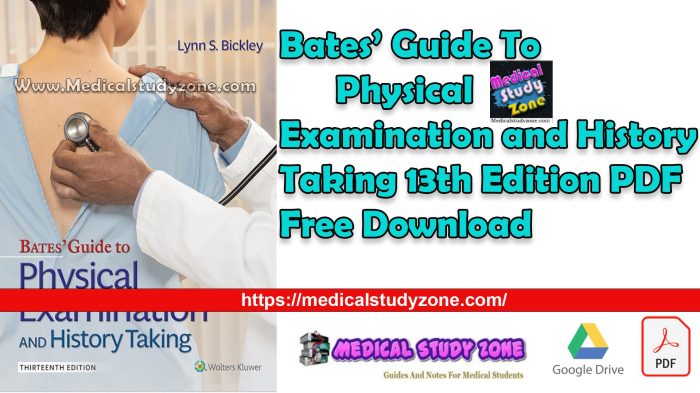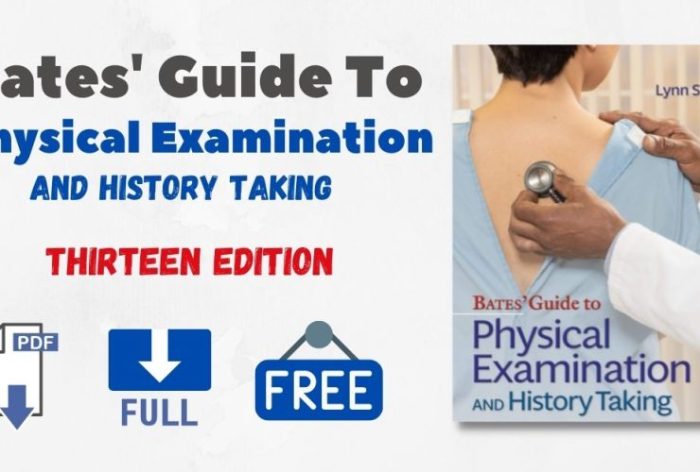Bates nursing guide to physical examination 3rd edition – The Bates Nursing Guide to Physical Examination, 3rd Edition, stands as a seminal work in the field of nursing practice. This comprehensive guide empowers nurses with the knowledge and skills necessary to conduct thorough physical examinations, providing a solid foundation for accurate diagnosis and effective patient care.
Delving into the intricacies of physical examination, this guide systematically explores the assessment of various body systems, including the cardiovascular, respiratory, gastrointestinal, and neurological systems. Readers will gain a deep understanding of examination techniques, common findings, and potential abnormalities, enabling them to identify and interpret physical signs with precision.
Comprehensive Physical Examination Techniques: Bates Nursing Guide To Physical Examination 3rd Edition

The comprehensive physical examination is the cornerstone of medical assessment. It involves a systematic and thorough evaluation of the patient’s body, from head to toe. The examiner uses various techniques to assess the patient’s general appearance, vital signs, skin, head, neck, chest, abdomen, musculoskeletal system, and neurological status.
Proper physical examination requires the use of appropriate instruments and tools, such as a stethoscope, otoscope, ophthalmoscope, and reflex hammer. These tools enhance the examiner’s ability to visualize and assess different body structures and functions.
Assessment of Specific Body Systems, Bates nursing guide to physical examination 3rd edition
The assessment of specific body systems follows a systematic approach, focusing on the cardiovascular, respiratory, gastrointestinal, and neurological systems.
For each system, the examiner evaluates specific parameters, including heart rate, rhythm, and sounds; respiratory rate, depth, and lung sounds; abdominal tenderness, masses, and bowel sounds; and neurological reflexes, coordination, and sensation.
| Body System | Key Assessment Findings | Significance |
|---|---|---|
| Cardiovascular | Heart rate, rhythm, murmurs | Cardiac arrhythmias, valvular heart disease |
| Respiratory | Respiratory rate, depth, lung sounds | Pneumonia, asthma, COPD |
| Gastrointestinal | Abdominal tenderness, masses, bowel sounds | Appendicitis, hernia, inflammatory bowel disease |
| Neurological | Reflexes, coordination, sensation | Stroke, Parkinson’s disease, multiple sclerosis |
Question & Answer Hub
What are the key features of the Bates Nursing Guide to Physical Examination, 3rd Edition?
This guide offers a comprehensive approach to physical examination, covering fundamental principles, head-to-toe examination techniques, and the assessment of specific body systems. It also includes tables summarizing key assessment findings and their significance.
How does the guide address cultural sensitivity in physical examination?
The guide recognizes the importance of cultural sensitivity and provides guidance on modifying examination techniques for patients of different ages, cultures, and health conditions.
What is the role of the Bates Nursing Guide in health promotion and disease prevention?
The guide highlights the role of physical examination in identifying risk factors and promoting healthy behaviors. It encourages nurses to incorporate screening tests, vaccinations, and lifestyle assessments into their practice to contribute to early detection and intervention.


